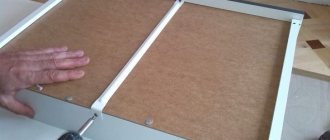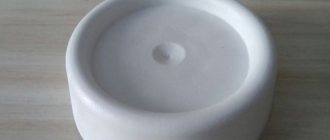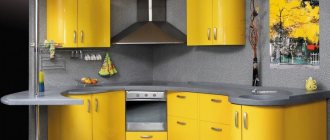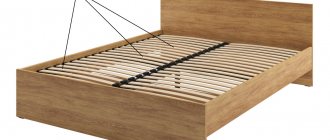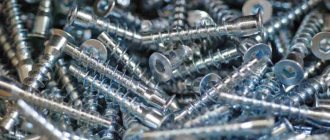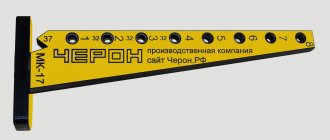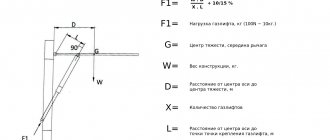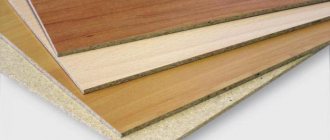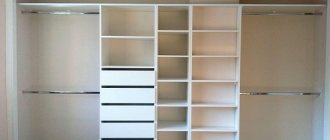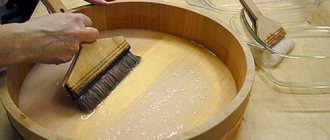Construction staplers used in the household facilitate the implementation of various procedures and operations related to construction and repair work, and fastening of decorative materials.
Having studied in detail the photo of staplers, you can select the necessary consumables that are suitable for certain tools, focusing on the instructions for their use and the information provided by the manufacturer on the packaging.
Types and sizes of staples for construction staplers
The basis for the classification by which staples for construction staplers are divided into different categories are two main parameters: the shape and size of consumables; according to these characteristics, the following types of consumables are divided:
U-shaped. The most common staples and the most universal staples are most often found in standard models of construction staplers.
U-shaped. A type of fastener, arc-shaped, used for fixing cables and wires with different cross-sections required during the installation of communication infrastructure.
T-shaped. A rare form of consumables, referred to in various literature as pins or nails, used for hidden fixation of various materials.
Among modern models of construction staplers, you can find universal devices that use several types of staples at once; the device standards are determined by the data posted on the packaging or in the instructions for use.
Types of staplers
There are many varieties and modifications of furniture staplers - they can be divided into 3 groups depending on the design complexity and performance.
The simplest and most mobile type of tool that does not require additional accessories and devices. To perform the operation, you only need to apply physical force. Simplicity of design and the absence of wearable elements are the key to the reliability and durability of such a device. Maintenance consists of periodic lubrication of parts. The service life of hand tools is 6-8 years.
A mechanical furniture stapler is suitable for performing simple household operations. For large volumes of work, using physical strength is tiring, and achieving high labor productivity is impossible.
The device is designed to perform medium-sized work at a professional level. The tool requires connection to an electrical outlet. There are modifications that run on a rechargeable battery. The impact mechanism is set in motion by pressing a button; no physical effort is required.
The electric motor increases the impact force several times. This allows you to quickly and easily pierce hard materials, and the fastening has increased strength. One of the subtypes of electric tools is a construction stapler, designed for fastening boards, lining, baseboards and other finishing materials.
The disadvantages of an electric device are its relatively high cost, increased weight due to the motor, and a limited working area by the length of the cord.
Electric models quickly fail due to incorrect selection of brackets or violation of operating rules. For beginners, it is better to first purchase simple and unpretentious mechanical staplers.
The most productive, powerful and durable models. To operate such tools, a compressor is required, so they are used in furniture factories, where individual workplaces can be equipped with a compressed air supply and a dedicated power line. Their use is not advisable for home and household needs.
Instead of a spring, the tool is equipped with a pneumatic cylinder. It is driven by air entering when the pedal or trigger is pressed. This design solution makes it possible to increase the workforce many times over and perform large volumes of work. The average speed of such pistols is 1 staple per second.
Otherwise, the design of pneumatic models is quite simple and does not require complex maintenance. You just need to periodically clean it and replace the O-ring as it wears out. The main disadvantage is stationarity. The range of the device is limited by the length of the air supply hose.
U-shaped fasteners
Such consumables are most often used in everyday life, they are practical and reliable, their description indicates three overall dimensions that are important for selecting a fastener, these are the following characteristics:
Bracket height. To denote it, the Latin letter H is used; this is a parameter that determines the depth of penetration of the fastener into the base, taking into account the thickness of the material being fastened.
Back length. In standard markings, the characteristic is indicated as L or b; it provides a certain masking of the place where the bracket is fixed and the material is fastened to the base during operation.
Element thickness. It is designated in the documentation as W or a and is the main characteristic of the strength of the staples; they can be made from various materials with varying strengths.
When using such staples for construction or furniture staplers, it is important to remember that it is the length of the element that is responsible for the possible load that can withstand the finished fastening; the larger this parameter, the more reliable the fixation.
Which staples are best?
It is better to use galvanized or stainless steel staples. This material is very reliable, most importantly durable and not susceptible to corrosion. Most manufacturers use this material for their staples. However, it is worth remembering that in fastening areas where the load is minimal, it is necessary to use lightweight aluminum staples.
It is important to know that staples can be either sharpened or unsharpened. It will be much easier to work with sharpened staples: they will not have a high load and sharpened ones will be easier to use for a large amount of work.
The thicker the material needs to be joined, the more massive and higher the staple required, which will be used when working with a stapler. But in this case, the stapler needs a lot of power.
To keep the fasteners invisible, narrow staples are needed. However, it is worth knowing that in this case, not all tools will work with these staples.
When work will be carried out with strong material, it is better to choose fasteners of small thickness - such a bracket will be sufficient in this situation.
U and T shaped materials
Differing in geometric shape, these types of stapler staples are rarely used in practice, but are necessary for certain activities carried out in the course of business activities.
What staples should I use to reupholster furniture?
The range of uses of staplers in the 21st century is large. This tool has become an indispensable assistant in construction, home furniture repair and in the production of furniture factories. Modern progress does not stand still, and what was previously routine work and took a lot of time is now automated and does not take much effort and time from men.
Now there are many varieties of construction staplers and staplers for furniture, and there are several times more types of fastenings. They all differ in height, strength, quality, and materials of manufacture. There are a huge number of types of staples, so much so that sometimes when you come to a hardware store to buy staples for a stapler, your eyes run wide from the variety of choices.
Information about what type of staples are needed for a particular stapler can be found in the instructions for the tool, and this information can also be found on the box.
Brief contents of the article:
Bracket material
Staples for an electric stapler (as well as for mechanical and pneumatic ones) are made from different materials. According to this criterion, the following types of fasteners are distinguished:
This determines not only the properties of fasteners, but also indicates the scope of their application.
Steel consumables for construction staplers
Due to their significant strength, steel staples are used in practice most often in various fields of activity. They may be hot or not. The first ones are used if you have to work with hard material. They are good to drive in, but they break more easily, unable to withstand lateral loads.
The main disadvantage of both types of steel fasteners is their susceptibility to corrosion: they rust over time. Corrosion processes occur especially quickly in humid conditions. This not only spoils the appearance of the connection, but also reduces its strength.
Staples for construction stapler Steel 62125, T50, 14x10.6 mm
To extend the life of steel brackets, they are coated with zinc. Galvanized products are quite resistant to destruction, so they last many times longer.
Also, to prevent corrosion, fasteners are made from stainless steel. Such products are more expensive than products made from ordinary metal. Stainless steel staples are very reliable because they are resistant to destruction. Galvanized and stainless steel consumables are produced mainly by well-known manufacturers who are concerned about their reputation.
Aluminum and copper fasteners
Aluminum staples are a cheap option. The products are resistant to corrosion, but have low strength: they can easily bend when driven in or burst from a relatively small load. For these reasons, the scope of application of aluminum consumables is limited to working with soft materials: assembling cardboard containers, securing electrical wiring, as well as light cladding.
Copper staples for furniture staplers are stronger than their aluminum counterparts. They are also resistant to corrosion and are suitable when working with soft materials. In addition, the high cost limits the distribution of copper fasteners: they are used mainly for decorative finishing.
What metals are they made from?
Staples for staplers are made from different metals:
- Aluminum ones are the cheapest, but it is better not to use them with hard materials or in places of heavy loads: they bend when driven with great force, and can also burst under load. But they don’t rust, which can be important.
- Copper ones attach well to non-rigid materials and certainly don’t rust. But their price limits their distribution. These staples are good under wallpaper or plaster: no drips or rust stains.
- Steel staples for staplers can be hardened or not. Hardened ones are a little more expensive, but much stronger. The disadvantage of both is that they rust.
- Galvanized and stainless steel. This is the most durable and reliable type of fastener. Almost all branded staples from stapler manufacturers fall into this category.
How does a mechanical device work and the principle of its operation?
The tool in question is activated by applying physical effort. That is why this device is also called a manual stapler. Its design and operating principle differs from that of a stationery device. Construction tools develop a lot of force, which is necessary for fastening or securing materials. According to the design of the drive mechanism, products are divided into two types - with a coil spring and a leaf spring. The main structural elements of a construction stapler:
- Housing - often made of steel, inside which working parts and mechanisms are located. The body has a recess for your hand, which allows you to hold the device during use.
- Handle - connects to the impact mechanism, charging the spring and then firing the staple. It is this handle that the user must exert physical force on to operate the tool.
- The impact mechanism is the basis of the tool, since it is through this device that the staple is fired. The impact mechanism consists of a spring, a hammer, a shock absorber and a striker. The striker acts on the staple, pushing it out and driving it into the material. An integral element of the impact mechanism is also an adjusting screw, through which the force on the bracket is adjusted
- The compartment for installing fasteners is a special channel into which staple cartridges are installed. The ramming mechanism plays an important role in the design of the compartment. This is a special device that pushes the magazine with staples towards the striker as they are used
- Tip - hole through which staples are fed for driving them
- The latch is not the main element of the device, which is intended for transporting the tool. It fixes the handle in an inoperative state, thereby preventing accidental impact on it
A detailed diagram of the structure of a construction stapler is shown in the photo below.
Externally, all mechanical staplers have the same design, but the internal working mechanisms differ in design. The main difference is in the design of the impact mechanism, which is implemented using a conventional coiled and leaf or spring spring. How they differ from each other is described in detail.
- A coil spring staple driver is a common type of stapler that falls under the category of household tools. Their main disadvantage is that they have a large load and recoil force. Long-term use causes physical fatigue in the hands, so the tool is not intended for prolonged use.
The principle of operation of such a stapler is that the handle engages with the striker, thereby moving it upward, overcoming the resistance of the spring. The more the spring is compressed, the stronger the impact on the bracket. When the striker reaches the maximum upper position, it jumps off the handle mount, and thereby it moves downward at high speed, hitting the bracket with the striker. The staple, under the influence of the striker, shoots out of the tip, entering the material. You need to know the operating principle of a construction stapler in order to be able to eliminate its breakdowns when they occur.
- Staple hammer with leaf spring - these staplers belong to the category of professional tools. They are characterized by smooth operation, increased service life, and also higher cost compared to household type staplers. However, this does not mean at all that such a stapler is intended exclusively for professional use. If you plan to use the tool frequently, it is better to take a device with a leaf spring.
The principle of their operation is similar to devices that consist of a coiled spring. When you press the handle, the flat striker moves with simultaneous deformation of the combat plate. As soon as the striker reaches the maximum upper position, it will return to its original position with instantaneous speed. This is achieved due to the fact that the plate tends to take its original position. The hammer, returning downwards, impacts the firing pin, and the latter, in turn, strikes the bracket. Such devices are also equipped with force regulators. They have a more complex design, which is reflected in their cost.
The difference in price between these tools is significant, as is the service life. Before you buy a mechanical stapler for driving staples, you should answer the questions - what is the tool for and how often do you plan to use it.
This is interesting!
You can distinguish a stapler with a coil spring from a device with a plate externally by such a characteristic feature as the location of the adjusting screw. On devices of the first type, the screw is located on top, and on devices of the second type, the adjusting washer is located on the handle.
Fastening tools for construction
The principle of operation of a construction stapler is similar to the process of driving nails. With its help, the staple passes through the top layer or more than one (the total thickness should not be greater than the length of the staple leg). In the extreme material, the ends of the wires remain sticking out on the reverse side, like the point of a nail that has come out. Using friction, the sheets stick to the last layer.
A richer classification among methods of driving a device. In this category they are:
- Mechanical hammer and lever.
- Pneumatic.
- Network electrical.
- Rechargeable.
The most popular devices are mechanical lever ones. Hammers have not become so widespread because of their operating principle - with a blow. Therefore, with their help it is not always possible to accurately drive the bracket into place. And it needs a lot of space to spread out.
